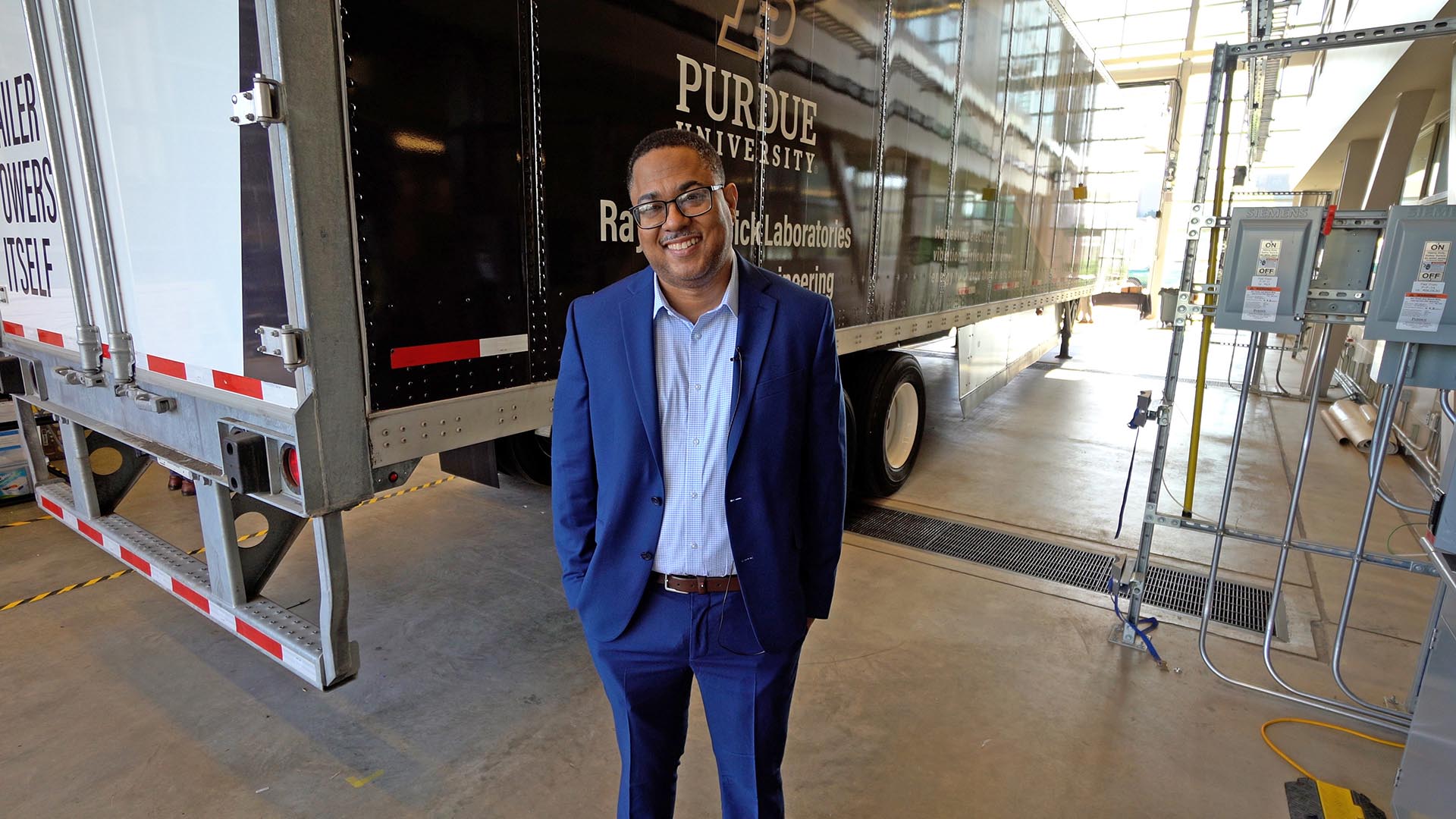This trailer powers itself: Purdue and Wabash collaborate on a trailer that recaptures its own energy
The future of electrified transportation isn’t just consumer vehicles. Tractor-trailers carry nearly 72% of the country’s freight, so innovations on that scale have the potential to make huge strides for sustainability worldwide. That’s why Purdue University researchers have teamed up with Wabash, the largest trailer manufacturer in the country, to investigate an experimental trailer that recaptures its own electricity from vibrations, heat, and airflow.
“At Wabash, we like to say that we’re a visionary leader in the transportation industry,” said Brent Yeagy, president and chief executive officer of Wabash. “In this age of sustainability and finding new ways to reduce carbon in our environment, nothing could be more visionary than a trailer that uses composite matrix materials to create its own electricity.”
The donated trailer is part of a three-year collaborative research project between Wabash, which is headquartered in Lafayette, Indiana, and Purdue University’s College of Engineering. The trailer was showcased at an open house event on April 30 at Purdue’s Herrick Labs, where the first experiments will take place.
“We’re investigating several ways to harvest electricity from a trailer’s normal operation,” said James Gibert, associate professor of mechanical engineering and one of the project’s principal investigators. “These modalities could be the vibration of the suspension system, aeroelastic vibrations of the composite panels, or harvesting the air used in the braking system.”
Gibert’s field of expertise is smart materials, especially in the realms of dynamics and vibration. His previous work has included embedding triboelectric generators into cardboard packaging, whose natural movement during the delivery process generated enough electricity to power sensors embedded in the boxes. Scaling up that process to something the size of a semi-trailer is the next logical step.
“The scale is much bigger than anything we’ve worked with before,” said Gibert. “But that’s a good thing. A semi-trailer has lots of mass, which means lots of opportunities for that mass to be utilized in ways it hasn’t before. Plus there’s an increasing regulatory push for these vehicles to be more energy-efficient. We are trying to get a step ahead of that, and think outside the box for what a novel energy-harvesting system could look like.”

Phase one of the project involves retrofitting the trailer with displacement sensors, accelerometers, anemometers, pressure gauges, and many other measurement tools. After Gibert and his team at Herrick Labs have turned the trailer into a mobile data acquisition system, Wabash personnel will take the truck onto the highways of Indiana for some short-haul and long-haul test drives. Once the Purdue team have collected data from the test drives, they will coalesce around the energy-harvesting methods that are most promising. In the final phase, Purdue and Wabash will collaborate on a deliverable product that can be scaled up and deployed to trailers around the world.
How much energy can you harvest from a trailer’s own vibrations? That’s tough to say before the experiments start. But Gibert says that reducing a tractor-trailer’s electrical load, even by a little bit, is a success. “By diversifying the load, we can reduce the size of the batteries required,” he said. “Lighter batteries means less weight, which leads to even more efficient operation. So it becomes a positive feedback loop.”
The other principal investigators from the Purdue side are Andres Arrieta, associate professor of mechanical engineering; Greg Shaver, director of Herrick Labs and professor of mechanical engineering; and John Evans, assistant professor of agricultural & biological engineering.
“Purdue is a natural choice for us to collaborate with,” said Yeagy, who holds a Bachelor of Science in Environmental Engineering Science and a Master of Science in Safety Engineering from Purdue University. “They’re located right across the river, and they are a leading engineering school. We couldn’t ask for a better partner to help bring these innovations to life.”
“Wabash has been a dream to work with,” said Gibert. “They’re actively engaged, they’re supportive, they’re flexible, and they’re immediate in giving their feedback. The best possible outcome for any engineer is having an impact on the world, and Wabash certainly shares that vision.”
“This is a game-changing event,” said Yeagy. “That trailer sitting in Herrick Labs means we’re hopefully on the verge of something we can deploy at scale. Partnering with a school like Purdue allows these types of visionary actions to come to life.”

Writers: Jared Pike, jaredpike@purdue.edu, 765-496-0374 | Dana Stelsel, dana.stelsel@onewabash.com, 765-771-5766
Source: James Gibert, jgibert@purdue.edu
